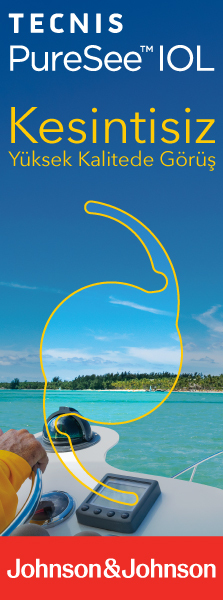2S.B. Ankara Atatürk Eğitim ve Araştırma Hast., 1. Göz Kliniği Şefi, Ankara Purpose: Evaluation of the effect of 2% dorzolamide on postoperative intraocular pressure (IOP) changes after phacoemulsification surgery.
Materials and Methods: A total of 166 patients who underwent uncomplicated phacoemulsification surgery were assigned to one of two groups. In the study group, 83 patients received one drop of 2% dorzolamide after surgery. In the control group, 83 patients received no antiglaucoma medication. In all patients the same viscoelastic solutions and materials were used during surgery. Postoperative IOP was measured at 12 hours after surgery. Patients who had uveitis, glaucoma and/or previous intraocular surgery were excluded from the study.
Results: Mean preoperative IOP in the dorzolamide group was 14.4 ±3.6 mmHg, while in the control group it was 13.7±2.9 mmHg. This difference was not statistically significant (p>0.05). However, mean postoperative IOP in the dorzolamide group was 16.9 ±9.1 mmHg, and this was significantly lower than the control group’s mean of 19.4±9.7 mmHg (p<0.05). The mean increase of IOP of dorzolamide group was 2.4±9.7 mmHg and it was 5.7±10.1 mmHg in control group, the mean IOP increment was significantly lower in dorzolamide group than the control group (p<0.05). Postoperative IOPs that were higher than 22 mmHg were less frequent in the dorzolamide group, occurring in 14.5% of patients, compared to 28.9% of patients in the control group. Postoperative IOPs in dorzolamide group were significantly less than control group IOPs (p<0.05).
Conclusion: Postoperative application of one drop of 2% dorzolamide effectively prevents IOP from increasing after phacoemulsification.
Keywords : Topical dorzolamide, phacoemulsification surgery, intraocular pressure, cataract surgery




